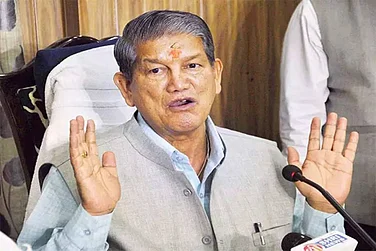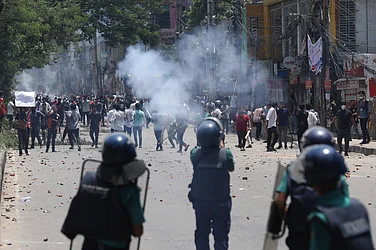May 1 is celebrated as International Labour Day across the world to honour the sacrifices and struggles of labourers and workers. Also popularly known as May Day, it commemorates the achievements of labourers, encouraging them to be aware of their rights. The origins of the labour union movement can be traced to the 19th Century when workers demanded better working conditions, fair wages, and shorter working hours - specifically the eight-hour day movement.
Workers in Chicago on 1st May 1886 organised a strike to demand an eight-hour workday; a schedule of eight hours for labour, eight hours for recreation, and eight hours for rest. Workers across the United States, however, came together to demand their rights and to fight for better working conditions after the movement took a violent turn. Following shelling by the police forces, a bomb exploded at a labour rally in Haymarket Square, killing seven police officers, labourers, and at least four bystanders.
While the United States established Labour Day as a national holiday in 1894, recognizing the contributions and achievements of workers, it was not until 1916 that the US began to recognise the eight-hour work timings.
First observed on May 1, 1923, in Chennai by the Labour Kisan Party of Hindustan, the day is also known as ‘Kamgar Divas’, ‘Kamgar Din’, Karmikara Dinacharane in Kannada, Karmika Dinotsavam in Telugu, Kamgar Divas in Marathi, Uzhaipalar Dhinam in Tamil, Thozhilaali Dinam in Malayalam, Shromik Dibosh in Bengali and ‘Antrarashtriya Shramik Divas’.
The day is celebrated through marches and protests to ensure the workers' rights and safeguard them against exploitation. Declared as a public holiday in several countries, including India, the day serves as a reminder to acknowledge the pivotal role played by the working class in society and their contribution to civilization.
The Labour Code: An attack on workers and unions
In September 2020, the Indian government codified 29 central labour laws into four codes – the Code on Wages 2019; the Code on Social Security 2020, Occupational Safety, Health and Working Conditions Code 2020; and the Industrial Relations Code 2020.
Passed in 2020, the Act has to date not been notified due to opposition. Economists and experts have observed that the government is concerned of the Act meeting the same fate as the now-withdrawn farm laws. Moreover, political experts have noted that the government has pushed the notification of the Act in the backdrop of the upcoming 2024 general elections.
The Factories Act, 1948 covering workers’ safety, health and welfare, is said to be stricter than the occupational safety and health code 2020. While the 1948 Act mandated for all hazardous factories, irrespective of size, to form a safety committee, these committees may only be formed following a government order or notification under the occupational safety and health code.
Centre of Indian Trade and Union (CITU) President K Hemlatha tells Outlook that the four labour codes breach the rights of workers and trade unions while catering to corporate and capitalists.
The BJP, after being reelected with a thumping majority in 2019, has blatantly been working for corporates while exploiting the workers, says Hemlatha.
“Despite a 100-year-old eight-hour working law protecting workers from exploitation, there are repeated attacks on their rights due to government facilitation that now enables employers to extend working hours without any extra pay,” says Hemlatha.
In February 2023, the Karnataka legislature passed an amendment to the Factories Act of 1948. The amended law now allows industries to extend working hours for labour up to 12 hours a day while keeping the maximum weekly work hours at 48.
“With technological advancement, there is an increased productivity which substantially should also decrease the working hours of labourers. The World Federation for Trade Unions (WFTU) and CITU have been demanding to slash working hours to 35 hours per week. On the contrary, employers have been exempted to increase the working hours,” says Hemlatha.
Labour being a subject on the concurrent list, both the Centre and the states can frame laws and rules. The government has been keen on an all-India implementation of the code, with many states reforming their labour laws despite opposition from trade unions, including Gujarat, Madhya Pradesh, Haryana, Karnataka, Tamil Nadu; etc.
Migrant workers, fair wages and unfair treatment of scheme workers
Hemlatha highlights the policies and amendments by the government that have further undermined the position of labourers, migrant workers, and scheme workers. While CITU and other trade unions have demanded the government to set the minimum wage rate at Rs 26,000 per month, she informs that the current minimum wage standards are fixed at less than Rs 9,000 per month.
Despite over 80 lakh scheme workers, mostly women employed under different ministries and departments of the central government-sponsored programs like Mid Day Meals, ASHA, Aanganwadi; etc., the government refuses to recognise them as workers, thus denying them the rights and privileges under labour laws.
“Over the years, we have seen a substantial increase in women’s participation in the labour movement in India,” she says.
Ninety-six per cent of the working women are employed in the unorganised sector, thus making them marginalised amongst the marginalised. Hemlatha says that while the Supreme Court guarantees these women social welfare benefits, these benefits can only be accessed if the women hold the Below Poverty Line (BPL) status. This raises the question: Does the state function to enable the poor to remain poor?
Talking about the Migrant Workers Act 1979 and Contract Workers Act, Hemlatha says the latter earlier required a contractor to procure a license from the government if at least 20 workers were under him. However, this threshold has been increased to 50, therefore not mandating a contractor license for anyone with less than 50 workers employed by him. This increases the vulnerabilities and threats of migrant workers, women and young adults who often succumb to trafficking and other violations under the garb of employment and wages.
The slashing of MGNREGA funds
For the financial year 2023-24, the Union Budget allocated a meagre Rs 60,000 crore for the Mahatma Gandhi National Rural Employment Guarantee Act (MGNREGA) scheme which guarantees employment to over 16 crore “unskilled labour families” across the country. Enacted in 2005, the scheme helped rural workers and labourers cope with Covid-19 lockdowns and unemployment.
The 18 per cent lesser Budget allocation was lower than the Rs 73,000 crore Budget estimates for the current year, and 33 per cent lower than the Rs 89,000 crore revised estimates for the scheme. Furthermore, the Ministry of Rural Development mandated the National Mobile Monitoring System (Software) (NMMS) app for capturing the attendance of workers under the Mahatma Gandhi NREGS from January 1, 2023.
On 30 January 2023, the MoRD directed the state governments that “all payments to the Mahatma Gandhi NREGS beneficiaries would be mandatorily made through Aadhaar Based Payment System (ABPS) only” February 1, 2023, onwards. Notably, as per the MoRD’s own MIS Report 1.1.9, only 43 per cent of NREGA workers are eligible for ABPS. Less than 20 per cent of NREGA workers are eligible for the same in Gujarat.
On Tuesday, MGNREGA labourers and activists from across Jharkhand will hold a demonstration in Ranchi against Centre for bringing down the allocation to less than one-fourth of what the country requires. They will also be demanding the withdrawal of NMMS and ABPS, which they say threatens their payment and also imposes arbitrary rules amongst a rural population which struggles with technological and systemic drawbacks.
“We are also demanding the Centre to increase the minimum wage rate to Rs 600. As for the state government, we will be protesting against the thefts in MGNREGS in Jharkhand and demanding that appropriate actions be taken on the complaints raised concerning the scheme,” says Jharkhand Janadhikar Mahasabha.
Arbitrary suppression of workers' and trade union movement
The Indian government in April 2023 de-recognised two major postal unions, the All India Postal Employees Union (AIPEU) and the National Federation of Postal Employees (NFPE), on flimsy accounts of making contributions to the farm protests and for buying books from the Communist Party of India (Marxist) (CPI-M) office in Delhi.
Founded in Kolkata in 1920, AIPEU is one of India’s oldest unions. The NFPE is the largest federation in the postal sector, with eight postal employee unions, including the AIPEU, affiliated with it.
“The postal employees have been fighting against the corporatisation of postal services following which the government derecognized AIPEU for affiliations with kisaan movement and WFTU,” highlights Hemlatha.


























